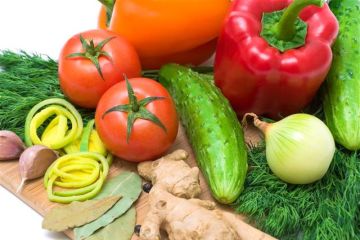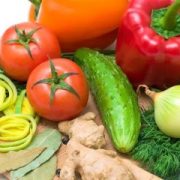Natural Ways To Keep Healthy Blood Sugar Levels
Maintaining healthy blood sugar levels is not just beneficial for those coping with diabetes or pre-diabetes. When our blood glucose levels are regulated, this means all sorts of positive side effects. Blood sugar levels affect our energy, hormone production, moods, weight, cravings, memory, and the risk of related diseases, like diabetes, metabolic syndrome and heart disease. The hormone insulin should help the body process sugar. However, the cells in our body can become resistant to insulin when there’s too much of it and it gets stored in the fat.
Your diet certainly plays a huge factor when it comes to your blood sugar levels. If you’re fond of consuming soft drinks, pastries, chips, cakes and other highly processed foods, then you’re not doing your blood sugar levels any favours. You might argue that satisfying these cravings can alleviate your hunger, mood and energy, but have you noticed that satiated feeling doesn’t last very long? These foods very quickly release sugar into the body. So, what you’re getting is creating a sugar high and after that, you crash and the cravings, fatigue and mood swings return to demand more of the same foods.
Other lifestyle choices, like your sleeping habits and exposure to and ability to deal with stress, influence your blood glucose health. Once you start working on these improvements, you can see for yourself the effects.
Less (bad) carbs
Sugar doesn’t just mean the granulated sugar you add to your cup of coffee or to a recipe for cake. One way you’re putting sugar into your system is through carbohydrates. When the body breaks down carbohydrates, it turns it into sugars, like glucose. Consuming too many carbohydrates means putting a strain on your insulin function, and blood glucose levels can rise as a result. The worst sort of carbohydrates for us are the overly processed and refined kind, like sugary drinks, sweets and junk food. While some other foods are still considered sources of carbohydrates, they’re much healthier and more natural. These include whole grains, nuts, legumes, vegetables and fruits.
More foods with a low glycemic index
The glycemic index or GI indicates how carbohydrates in certain foods affect your blood sugar levels. Those high up on the index take a short time to be processed by the body and can cause spikes in blood sugar, while those foods low on the index release sugar at a much slower rate. Some great examples of such foods are seafood, meat, eggs, oats, beans, lentils, sweet potatoes and corn.
More fibre
Fibre has plenty of benefits that help with digestion and this includes how the body processes carbohydrates and absorbs sugar. Eating more soluble fibre can lower your blood sugar levels, studies have shown. A high-fibre diet can even help regulate type 1 diabetes. Fibre-rich foods include vegetables, fruits, legumes and whole grains.
Stay hydrated
Drinking enough water also affects your blood glucose levels. Your kidneys should be able to flush out excess blog sugar through your urine. Stick to plain water and avoid sweetened drinks.
More physical activity
Your body should become more sensitive to insulin with regular exercise. Better insulin sensitivity means less excess sugar in your system. Excess blood sugar can also be utilised for energy and muscle contraction when you’re working out.
More (and better) sleep
Another factor that affects insulin sensitivity is getting enough quality sleep. A lack of sleep has also been found to sway appetite and mood swings in a negative way. Not enough sleep also aggravates your cortisol levels, which means more stress. More stress causes cravings, irritability and a whole lot of other risky problems.




